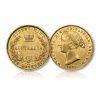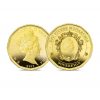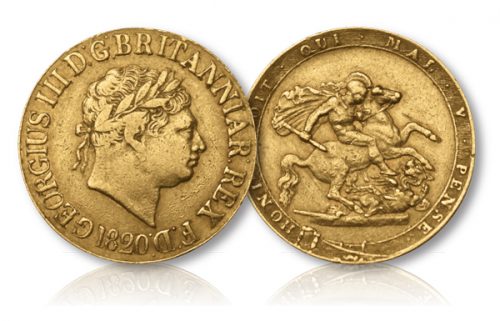Description
King George III Gold Sovereign 1817-1820 – The Very First Modern Sovereign
Following the financial turmoil that had accompanied the Napoleonic Wars, King George III decided upon a reform of the gold coinage. It was decided that the guinea would be replaced by a coin valued at exactly one pound – the guinea was valued at one pound and a shilling which made accounting somewhat cumbersome. The new coin would be called the ‘sovereign’ and it was to be accompanied by a half sovereign.
The sovereign was a coin that had been struck many centuries earlier by King Henry VII and the half sovereign had been introduced by his son and heir King Henry VIII. They were both ceased after the Restoration of King Charles II.
The new coin of King George III was only struck for four years from 1817-1820. It featured a portrait of King George III by the acclaimed designer Benedetto Pistrucci.
It was decided that the traditional design of the Coat of Arms would no longer be used and in its place a depiction of St George slaying the dragon by the talented engraver Benedetto Pistrucci was adopted. This design would become synonymous with the British Sovereign – and the George III sovereign was the very first coin upon which this design appeared.
In addition, the first type – only issued in the years 1817, 1818, 1819 and 1820 – was the only one to feature the early design of St George within a garter.
This coin earns it’s place in the ten most important sovereigns because not only is it the very first coin of its kind, but it is the only sovereign to feature this first rendition of St George slaying the dragon by the great designer Benedetto Pistrucci (although a limited edition coin has been released in 2017 which reproduces this original design).
The design was very popular but in 1821 Pistrucci redesigned it for the first sovereigns of King George IV, removing the garter belt around the outside and giving it a more classical treatment. This is the earliest design of St George slaying the dragon, a design that has become synonymous with British Gold coinage.





